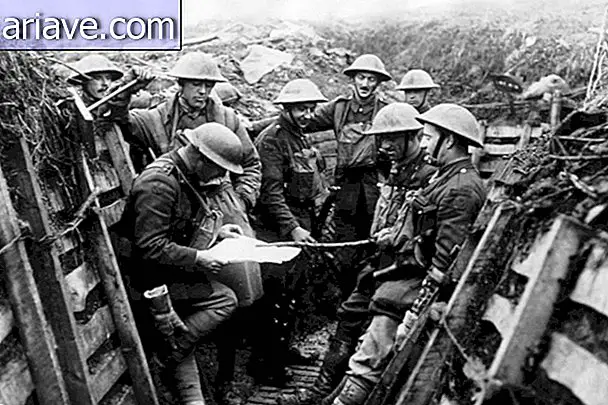11 curiosities about “The Hobbit”, which turns 80
1. The beginning of everything
In 1928 Tolkien scribbled in a paper: "In a hole in the ground lived a hobbit." For those who read the work, know that this is the first sentence of the book that would revolutionize the genre of fantasy. When Tolkien wrote this passage, he had no idea what a hobbit would look like, so it eventually extended into description and history.

2. Origin of Names
Tolkien was a doctor of letters and a university professor and his hobby was to invent languages and alphabets, giving rise to many words. What few people know is that the names of the dwarves appearing in "The Hobbit" and even Gandalf's were inspired by a Nordic poem called "Völuspá".

3. He didn't coin the word "hobbit"
The author is considered the father of Hobbits, but apparently this word had existed in the English language since the 19th century, when it appeared in a book to describe small creatures or fairies - not unlike what Tolkien himself wrote.

4. Bilbo would hit Smaug
At the end of the book we read the clash between an invisible Bilbo and the golden worshiping dragon. In the early versions, however, the hobbit even wounded Smaug with the Sting, before letting him be killed by more competent warriors, but since Bilbo is not exactly a warlike being, the passage was eventually deleted from the final version.

5. The first criticism
Rayner Unwin, just 10 years old, was the “first critic” to comment on Tolkien's work: he was the son of Sir Stanley Unwin, the editor who embraced Tolkien's sketch, and said “The Hobbit” was “good and should attract all children between 5 and 9 years old. ” All fans thank Rayner for enjoying the book, otherwise we could never have discovered the genius of the British writer.

6. Writer and illustrator
The original illustrations from “The Hobbit” were made by Tolkien himself! In addition to creating the whole story, characters and outcomes, the writer drew some of the passages and even made the maps that are known to fans to this day!

7. First Edition
Sales were not expected to be so high, so “The Hobbit” hit bookstores on September 21, 1937 with only 1, 500 copies sold out in less than three months! Now, 80 years later, over 100 million units of the classic have been sold, making it the 6th most commercialized book in history! In 2008, a first edition was sold for £ 60, 000 - the equivalent of over $ 240, 000 today!

8. First Criticism of Truth
One of the first renowned reviews of "The Hobbit" came out in the weekly magazine The Times Literary Supplement as early as 1937 and was written anonymously by none other than CS Lewis, author of "The Chronicles of Narnia, " another fantasy literature classic. Lewis was one of Tolkien's best friends.

9. Men's Book
“The Hobbit” is a very masculine book: there are 13 dwarfs, a wizard, a hobbit, a dragon and so on. In fact, the only female character mentioned by name in the work is Belladonna Tuk, Bilbo's mother. No wonder other "women" were created for the film version, such as the Elves Tauriel and Galadriel - the latter appearing only in the writings of "The Lord of the Rings" and "The Silmarillion."

10. Changes in the work
When “Lord of the Rings” was commissioned from Tolkien, he eventually developed the One Ring story further and needed to make some adjustments to “The Hobbit” so that the two stories were more coherently linked. Therefore, the second edition, published in 1951, brings different accounts of the meeting between Bilbo and Gollum.

11. Names changed
In the early drafts, the wizard Gandalf was called Bladorthin, while Thorin Oak Shield, dwarven leader, was called ... Gandalf!












